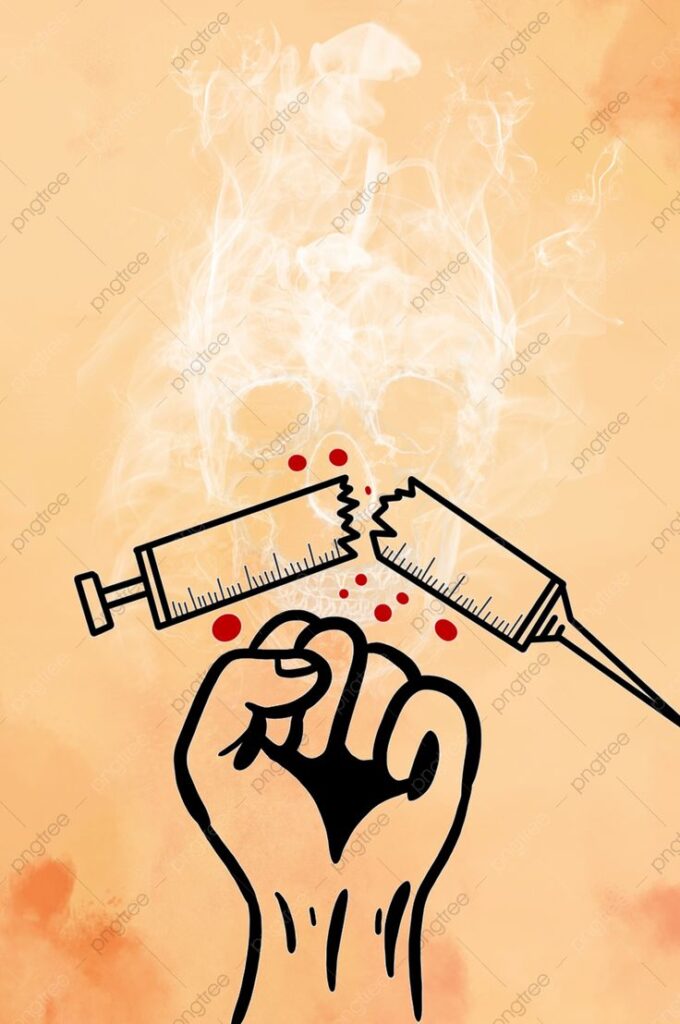The emergence and re-emergence of viral infections pose significant threats to global health, requiring the continuous development and refinement of antiviral drugs and treatments. These medications are designed to combat viral infections by inhibiting the replication of viruses, reducing their severity, and preventing complications. The field of antiviral treatment is vast, encompassing various drug classes, mechanisms of action, and treatment strategies, each playing a crucial role in the fight against viruses.
In this article, we will explore the development and effectiveness of antiviral drugs and treatments, focusing on the most significant advancements, current challenges, and future directions. We will also discuss how these treatments contribute to global Health and well-being, particularly in the context of recent viral outbreaks.
The Basics of Antiviral Drugs: How They Work
1. What Are Antiviral Drugs?
- Definition: Antiviral drugs are medications specifically designed to treat viral infections by inhibiting the life cycle of viruses. Unlike antibiotics, which target bacteria, antiviral drugs focus on preventing viruses from replicating and spreading within the body.
- Mechanisms of Action: Antiviral drugs work by targeting various stages of the viral life cycle, including viral entry into host cells, replication, assembly, and release. By interfering with these processes, antiviral drugs help to reduce the viral load and alleviate symptoms.
2. Types of Antiviral Drugs
- Nucleoside Analogues: These drugs mimic the building blocks of viral DNA or RNA, causing premature termination of viral replication. Examples include acyclovir, used to treat herpes infections, and remdesivir, used for COVID-19.
- Protease Inhibitors: Protease inhibitors block viral enzymes (proteases) essential for the maturation of viral particles. They are commonly used in the treatment of HIV and hepatitis C.
- Neuraminidase Inhibitors: These drugs, such as oseltamivir (Tamiflu), prevent the release of new viral particles from infected cells, making them effective against influenza viruses.
- Entry Inhibitors: Entry inhibitors block the virus from entering host cells, thereby preventing infection. An example is maraviroc, used in HIV treatment.
- Polymerase Inhibitors: Polymerase inhibitors interfere with viral polymerases, enzymes responsible for viral replication. Favipiravir, used in some countries for treating COVID-19, is an example.
3. Antiviral Drug Resistance
- Emergence of Resistance: One of the challenges in antiviral therapy is the development of drug-resistant strains of viruses. Mutations in viral genomes can lead to resistance, reducing the effectiveness of existing treatments.
- Strategies to Combat Resistance: Combination therapy, where multiple antiviral drugs are used simultaneously, is a common strategy to prevent resistance. This approach is particularly effective in the treatment of HIV and hepatitis C.
The Development of Antiviral Drugs: A Historical Perspective
1. Early Developments
- Discovery of Acyclovir: The development of acyclovir in the 1970s marked a significant milestone in antiviral therapy. Acyclovir was one of the first effective antiviral drugs and is still used today to treat herpes simplex virus (HSV) infections.
- HIV Epidemic and Antiretrovirals: The HIV/AIDS epidemic in the 1980s spurred significant advancements in antiviral drug development. The introduction of antiretroviral therapy (ART) transformed HIV from a fatal disease into a manageable chronic condition.
2. Modern Advances
- Hepatitis C Treatment: The development of direct-acting antivirals (DAAs) for hepatitis C revolutionized treatment, leading to cure rates of over 90%. Drugs like sofosbuvir and ledipasvir have made hepatitis C curable in most patients.
- COVID-19 Pandemic: The COVID-19 pandemic highlighted the importance of rapid antiviral drug development. Remdesivir, initially developed for Ebola, was repurposed to treat COVID-19, becoming the first antiviral drug approved for this purpose.
3. Challenges in Drug Development
- Viral Mutation: The high mutation rates of viruses, especially RNA viruses like HIV and influenza, present challenges in developing long-lasting antiviral drugs. Constant surveillance and adaptation of treatment protocols are necessary to keep pace with viral evolution.
- Safety and Efficacy: Ensuring the safety and efficacy of antiviral drugs is crucial. Rigorous clinical trials are required to evaluate the benefits and potential side effects of new treatments.
Effectiveness of Antiviral Treatments: Case Studies
1. HIV/AIDS
- Antiretroviral Therapy (ART): ART has been the cornerstone of HIV treatment for decades. By using a combination of drugs that target different stages of the viral life cycle, ART effectively suppresses the virus, allowing individuals to live longer, healthier lives.
- Prevention of Transmission: ART not only benefits those infected with HIV but also reduces the risk of transmission. When taken consistently, ART can lower the viral load to undetectable levels, making it nearly impossible to transmit the virus to others.
2. Influenza
- Neuraminidase Inhibitors: Drugs like oseltamivir and zanamivir are widely used to treat influenza. When administered early in the course of the illness, these antivirals can reduce the severity and duration of symptoms.
- Limitations and Resistance: Despite their effectiveness, neuraminidase inhibitors are not a cure for influenza, and resistance can develop. Annual flu vaccines remain the primary tool for preventing influenza outbreaks.
3. Hepatitis C
- Direct-Acting Antivirals (DAAs): The advent of DAAs has transformed hepatitis C treatment, with cure rates exceeding 90%. These drugs are highly effective, well-tolerated, and have shortened treatment durations compared to older therapies.
- Global Impact: The success of DAAs has led to initiatives aimed at eradicating hepatitis C globally. However, access to these life-saving drugs remains a challenge in low- and middle-income countries.
4. COVID-19
- Remdesivir: Initially developed for Ebola, remdesivir became the first antiviral drug approved for treating COVID-19. Clinical trials have shown that it can reduce recovery time in hospitalized patients with severe disease.
- Emerging Treatments: The pandemic has accelerated research into new antiviral drugs and therapies, including monoclonal antibodies and oral antivirals like molnupiravir. These treatments offer additional options for managing COVID-19, particularly in high-risk patients.
The Role of Antiviral Treatments in Global Health
1. Combating Viral Outbreaks
- Rapid Response: The development of antiviral drugs is critical for responding to viral outbreaks. During the COVID-19 pandemic, the rapid deployment of treatments like remdesivir and monoclonal antibodies helped to manage the crisis and reduce mortality.
- Pandemic Preparedness: Investing in antiviral research and development is essential for pandemic preparedness. Early-stage research into broad-spectrum antivirals, which target multiple viruses, could provide a first line of defense against future outbreaks.
2. Reducing the Burden of Chronic Viral Infections
- HIV and Hepatitis: Chronic viral infections like HIV and hepatitis B and C place a significant burden on healthcare systems. Antiviral treatments have been instrumental in reducing this burden by improving patient outcomes and preventing complications.
- Long-Term Management: For many chronic viral infections, antiviral drugs are part of long-term management strategies. Ensuring access to these treatments is crucial for controlling the spread of these infections and improving public health.
3. Challenges in Global Access
- Access Disparities: Despite the effectiveness of antiviral drugs, access to these treatments is not universal. High costs, limited healthcare infrastructure, and patent restrictions can prevent people in low-income countries from receiving life-saving medications.
- Efforts to Improve Access: International initiatives, such as the Global Fund to Fight AIDS, Tuberculosis, and Malaria, and partnerships with pharmaceutical companies, aim to improve access to antiviral drugs in resource-limited settings. Generic production and patent pooling are also strategies used to lower costs and increase availability.
Future Directions in Antiviral Drug Development
1. Broad-Spectrum Antivirals
- Targeting Multiple Viruses: Broad-spectrum antivirals are designed to target multiple viruses, potentially offering a single treatment option for various infections. Research in this area is ongoing, with the goal of developing drugs that can be quickly deployed during new viral outbreaks.
- Innovation in Drug Design: Advances in drug design, including the use of artificial intelligence and machine learning, are expected to accelerate the discovery of broad-spectrum antivirals. These technologies can help identify potential drug candidates faster and more efficiently.
2. Personalized Medicine
- Tailoring Treatment: Personalized medicine, which involves tailoring treatment to an individual’s genetic makeup and the specific characteristics of their infection, is an emerging field in antiviral therapy. This approach could improve treatment outcomes and reduce the risk of resistance.
- Genomic Insights: Understanding the genetic factors that influence an individual’s response to antiviral drugs can help in developing more effective treatments and identifying patients who are likely to benefit from specific therapies.
3. Combination Therapies
- Combating Resistance: Combination therapies, which involve using multiple antiviral drugs simultaneously, are a key strategy in combating drug resistance. This approach is already used in HIV and hepatitis C treatment and is being explored for other viral infections. By targeting different stages of the viral life cycle, combination therapies can prevent the virus from developing resistance to any single drug, enhancing treatment efficacy.
4. Immunomodulatory Therapies
- Boosting the Immune Response: In addition to directly targeting viruses, there is growing interest in therapies that modulate the immune system to enhance the body’s natural defenses against infections. Immunomodulators, such as interferons, have been used to treat viral hepatitis and other infections, and ongoing research aims to develop more targeted and effective immune-based therapies.
- Monoclonal Antibodies: Monoclonal antibodies represent a promising area of antiviral treatment. These laboratory-produced molecules can bind to specific parts of a virus, neutralizing it and preventing infection. They have shown effectiveness in treating COVID-19 and are being investigated for use against other viral diseases.
5. Antiviral Vaccines
- Preventive Approach: While not antivirals in the traditional sense, vaccines play a crucial role in preventing viral infections and reducing the need for antiviral drugs. The success of vaccines against diseases like influenza, hepatitis B, and COVID-19 highlights the importance of integrating vaccine development with antiviral drug research.
- Vaccine-Drug Synergy: Combining antiviral drugs with vaccination strategies can offer a synergistic approach to controlling viral infections. For instance, antiviral drugs may be used to treat breakthrough infections in vaccinated individuals or to provide protection during vaccine shortages.
Conclusion
The development and effectiveness of antiviral drugs and treatments are cornerstones of modern Health care, providing critical tools in the fight against viral infections. From the early days of acyclovir and antiretroviral therapy to the rapid deployment of treatments during the COVID-19 pandemic, antiviral drugs have transformed the management of viral diseases, saving countless lives.
Despite significant progress, challenges remain. The emergence of drug-resistant viruses, disparities in global access to antiviral treatments, and the need for rapid response to new viral threats underscore the importance of continued investment in antiviral research and development. The future of antiviral therapy will likely see innovations in broad-spectrum antivirals, personalized medicine, combination therapies, and immunomodulatory approaches, all aimed at enhancing the effectiveness of treatments and improving global health outcomes.
As we look to the future, the integration of antiviral drugs with preventive measures like vaccines, along with efforts to ensure equitable access to these life-saving treatments, will be crucial in safeguarding global health. The ongoing advancements in this field offer hope for more effective management of both existing and emerging viral infections, ultimately contributing to a healthier and more resilient world.



